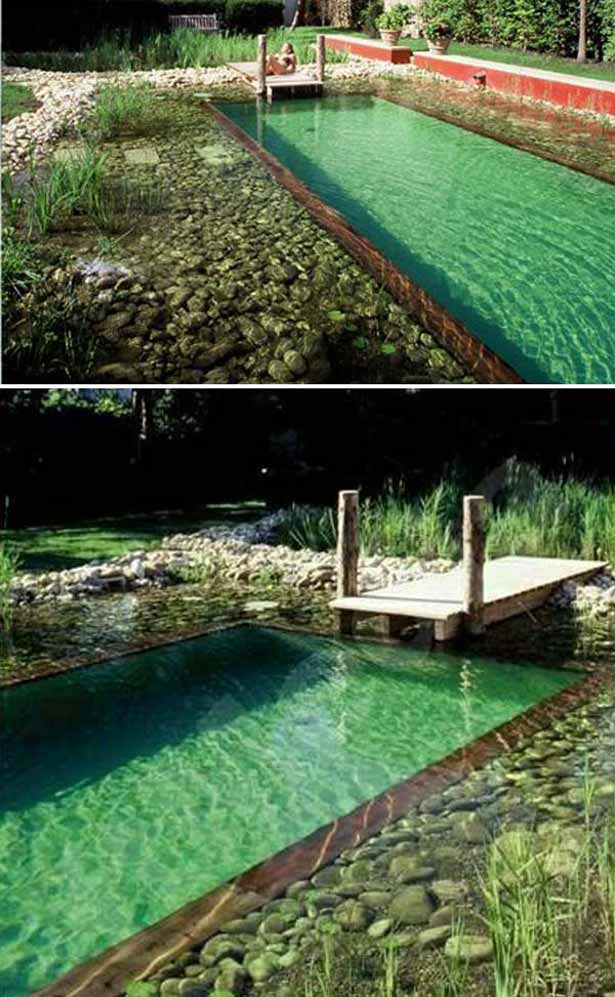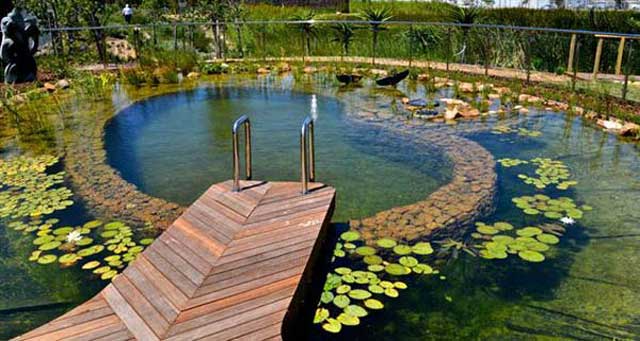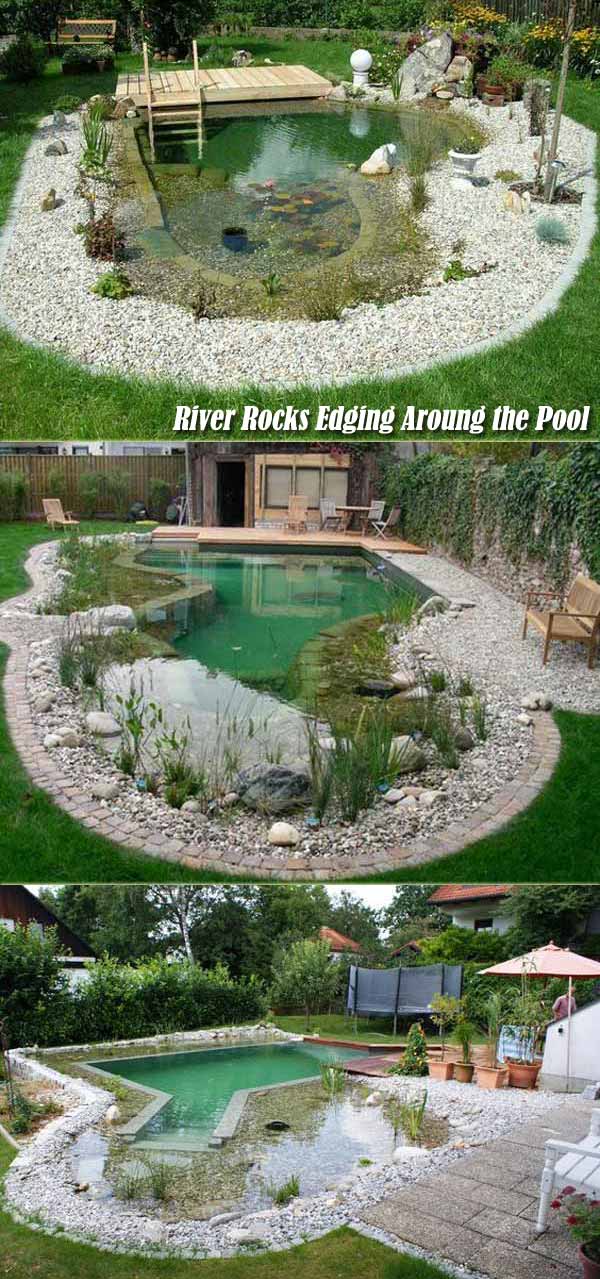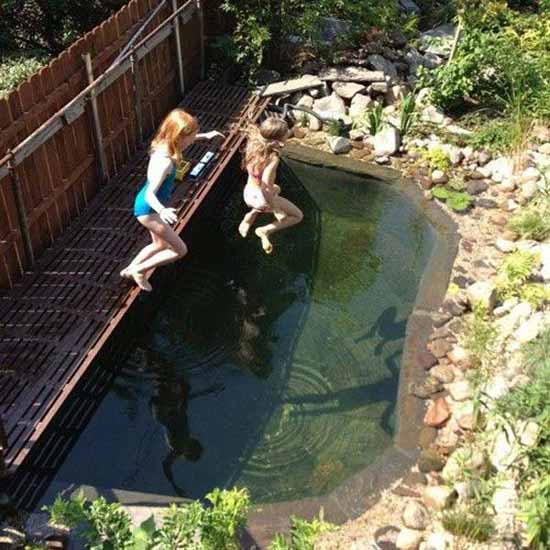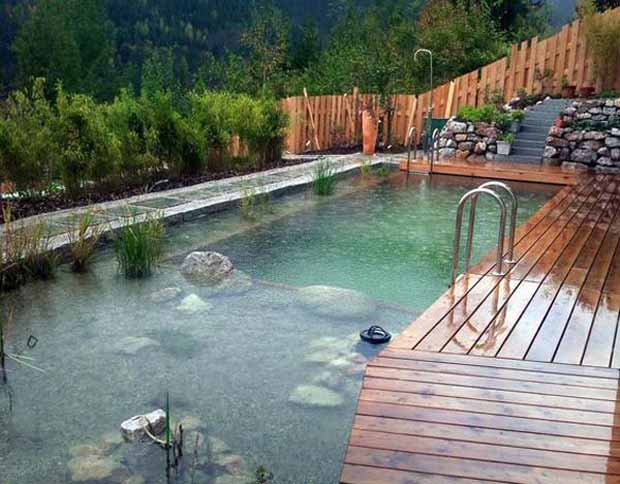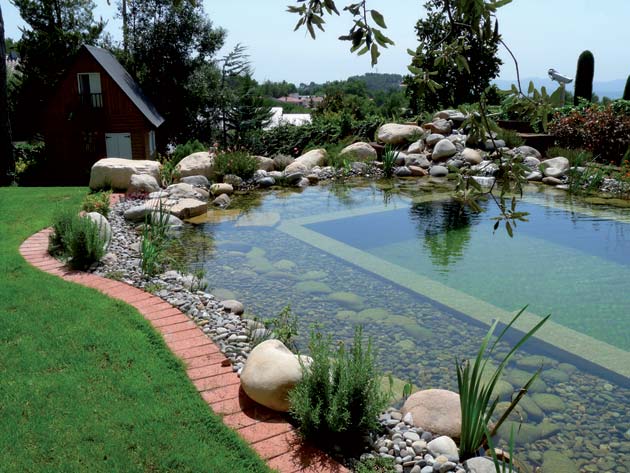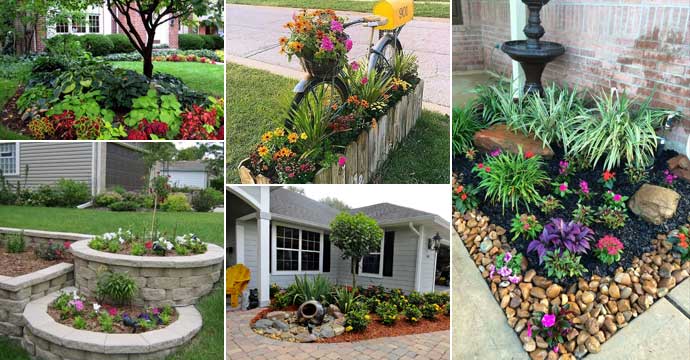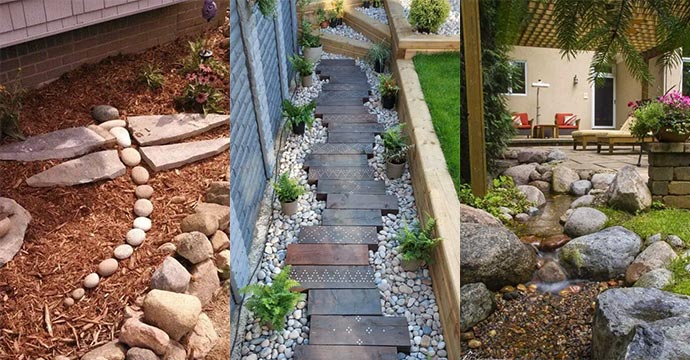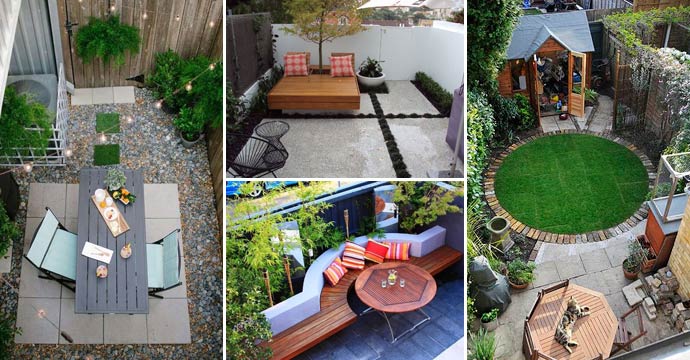Natural Swimming Pool Ideas [How to, Tips and Pictures]
There is no doubt that if you have a natural swimming pool near your home, you won’t like to swim in a harsh, chlorinated concrete hole. Similar to rivers and lakes, natural or organic swimming pools are completely chemical-free and have a self-cleaning ecosystem. They use aquatic plants and natural materials to filter the water, so they are often less expensive to maintain than traditional pools. In addition to being healthier and having lower maintenance costs, natural swimming pools are much more beautiful to look at in your landscape, with natural-looking, beautifully shaped and curved edges.
In this article, we will provide a guide on how to build a gorgeous natural pool in your own backyard, along with some tips for maintaining a natural swimming pool. We will also present 15 natural pool inspirations (pictures)!
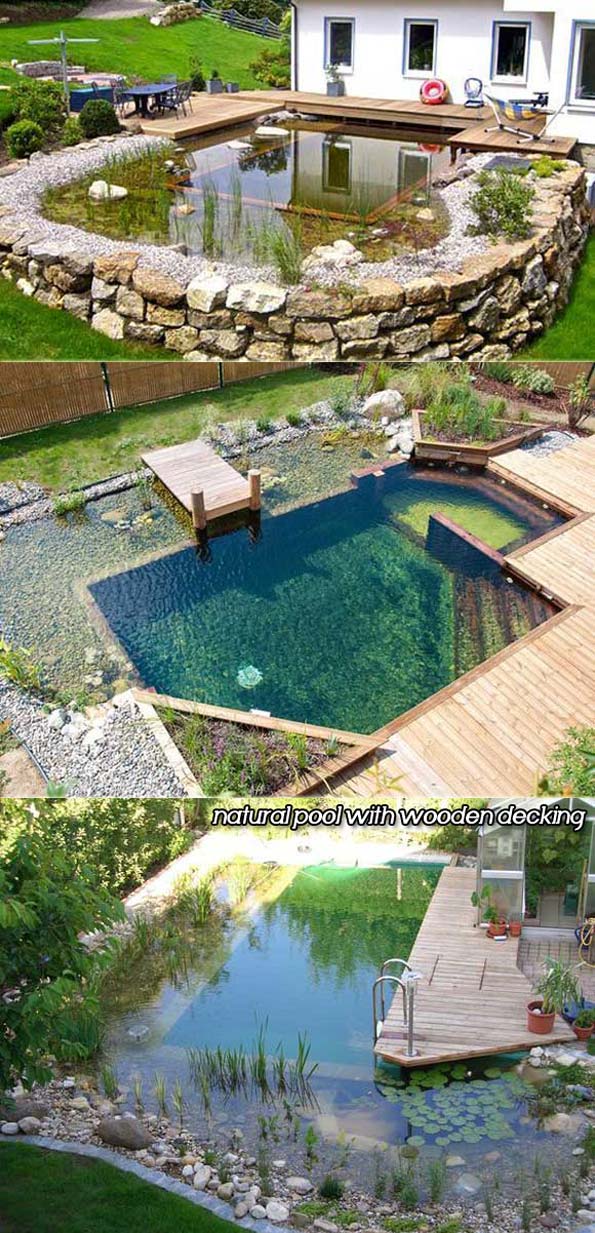
#1. Choose The Location
Deciding on the location for your natural pool is the first thing you need to do. You will have to consider where to set up the filtration system and how much space the equipment and piping will require. Additionally, you need to think about which plants will grow and thrive near your new oasis, as plants will be an important part of your landscaping.
Tip: Avoid making your pool design too complex. While shallows, natural stone walls, and water features may look great, they can be expensive and add difficulty to the construction process.
YOU MAY ALSO LIKE: Stock Tank Pools Let You Stay Cool This Summer
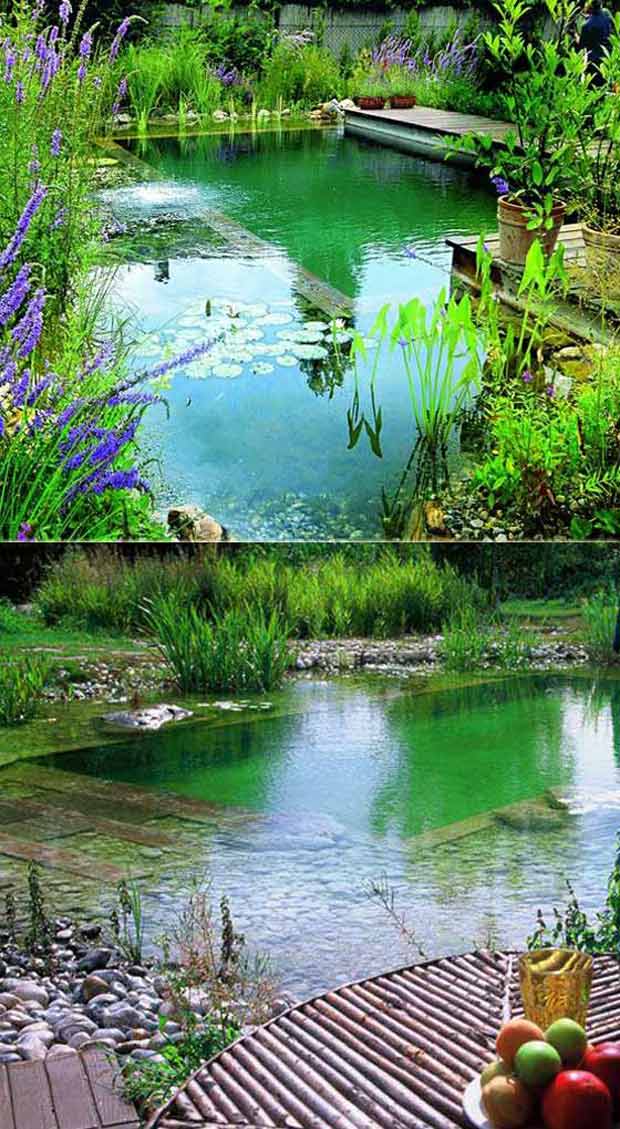
#2. Time to Dig
Once your plan is in place, you can start digging the land. You can excavate your pool to be as shallow or as deep as you desire. To prevent the sides from caving in, make sure the sides slope. The right slope ratio is one foot of vertical drop per three feet horizontal.
Tips: Before digging, ensure that there are no water, sewer, or gas lines in the area. Additionally, make sure the bottom of your natural pool is as flat as possible, as it will be easier to clean.
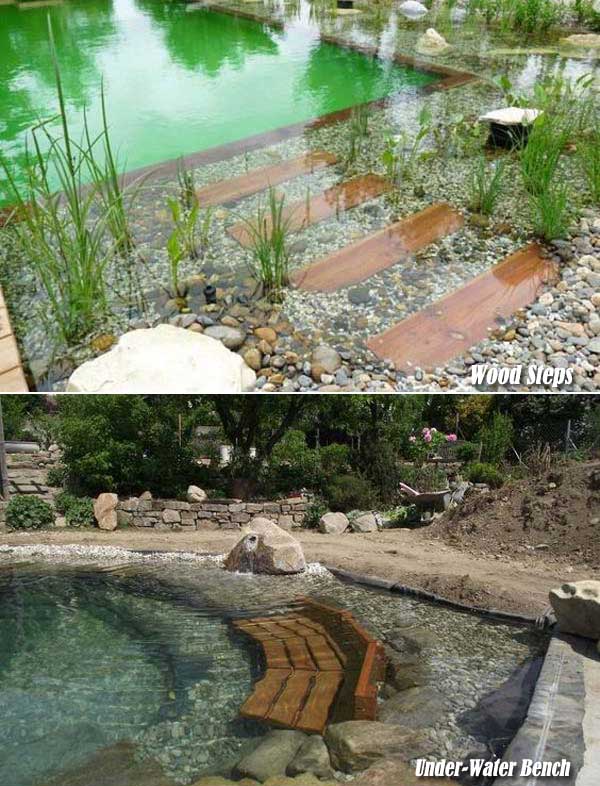
#3. Divide Your Natural Pool
Because natural pools rely on aquatic plants to filter the water, it’s better to reserve at least 50% of your pool’s surface area for plants. Additionally, you will need to separate the swimming area of your pool from the filtration area, or plant zone.
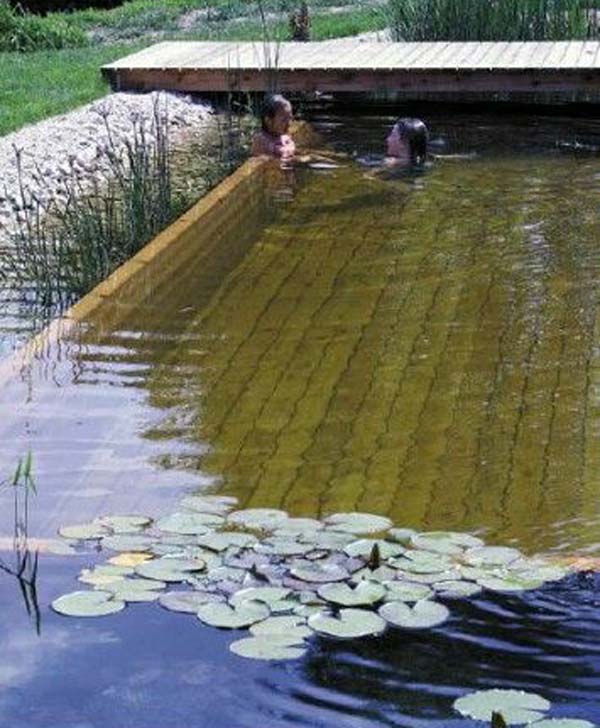
#4. Set Up Filtration
Aquatic plants need circulated water to function properly as a natural filter. Bacteria on the plants’ roots break down toxins and remove excess nutrients in the water. You need to keep the water from becoming stagnant. The water needs to flow and be aerated; otherwise, it will lead to problems such as bacterial growth and mosquito infestation. To make your pool’s natural filtration system work, it needs to circulate continuously through the use of a pump and PVC piping. Underwater aerators are another important equipment used to ensure that the oxygen levels in your pool ecosystem are maintained.
Tip: It’s best to hire a professional when dealing with any electrical components as many of these fittings will have to work in or near water.
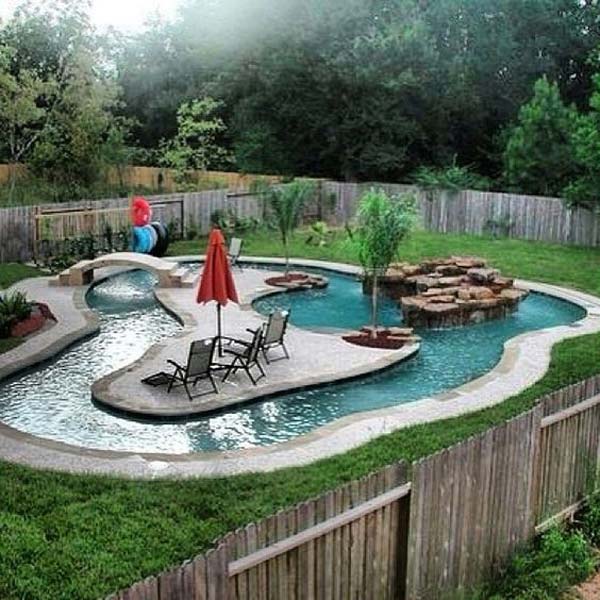
#5. Waterproofing
Once the digging for your pool and filtration zones is complete, it’s time for the most important and tricky part of the entire project – sealing the pool. You can apply a layer of bentonite clay to achieve waterproofing or lay a synthetic liner. Bentonite clay, like glue, provides a relatively cheap way to prevent water from leaking into the ground. If you decide to use clay, consult with a local pond builder to see if the soil in your region will work with it. After the bentonite clay or liner is installed, fill the bottom of the pool with 4-5 inches of clean gravel.
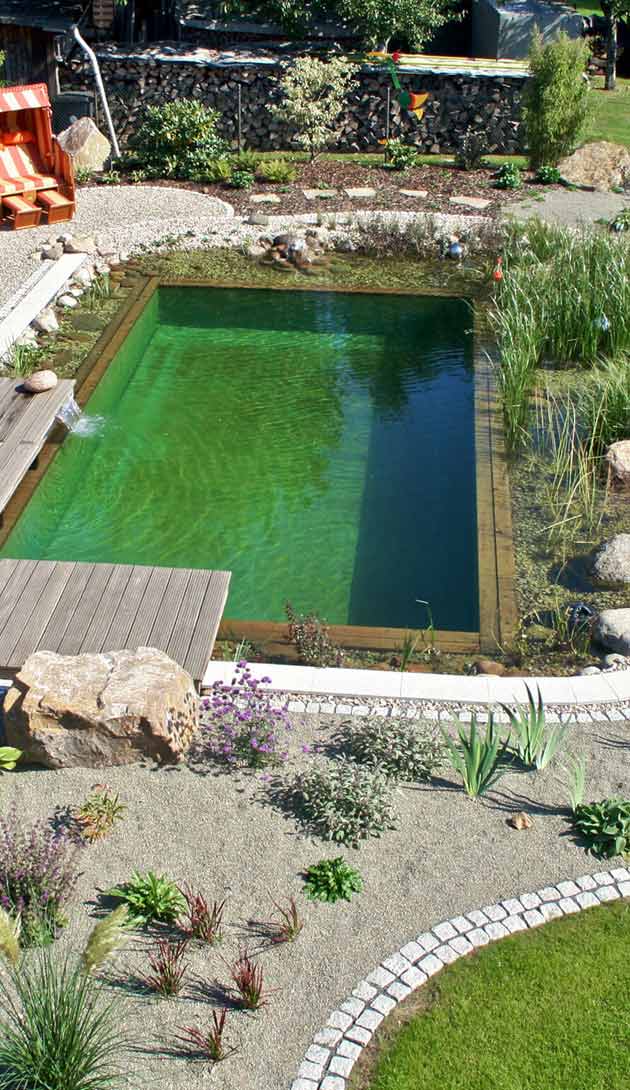
#6. Construct The body of the Pool
Rastra Blocks, made from cement and recycled foam plastic, may be your best option for constructing the main body of the pool, as you won’t need to deal with the intricacies of concrete pouring. You’ll need to place gravel beneath the Rastra blocks and then fill the spaces between the stones with an expanding foam sealant.
Tips: Using black liners can produce a high passive heat gain, making heating much cheaper or even unnecessary.
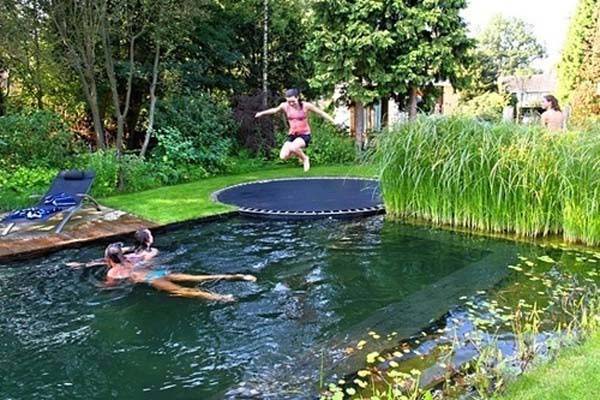
#7. Plant Around Your Natural Pool
Be sure to choose plants that are suited to your climate. Select soil that’s free of organic matter for your plant zone. Place your plants into the soil, anchoring them with plenty of gravel. Not only do plants create an authentic, natural feel for your new backyard sanctuary, but they also hold the soil in place effectively to stabilize the pool edges.
